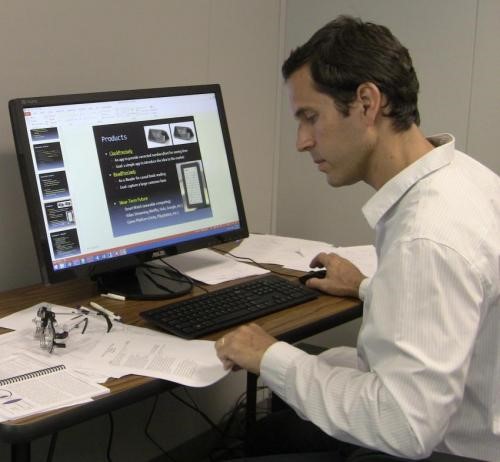
After that age of 40, the lens in the human eyes gradually thickens, reducing our ability to focus and see objects up close. The condition is called presbyopia, and affects nearly everyone, forcing us to compensate by wearing corrective eyewear. One company by the name of CPrecisely is developing technology that allows people to see digital content with increased sharpness by mimicking the effects of wearing glasses, without actually wearing glasses.
CPrecisely is a Purdue Research Park-based company co-founded by Daniel Aliaga, an associate professor in Purdue’s Department of Computer Science, Chris May, the chief technology officer, and Ignacio Garcia-Dorado, the chief science officer. The company’s mission is to develop corrective imaging technology to help visually impaired people interact with electronics without needing corrective eyewear, the piece of equipment worn by 75 percent of people in the United States.
Their approach leverages the way in which the uncorrected eye incorrectly focuses light rays, by correcting the image according to the user’s eyesight and create a personalized solution using existing digital displays. “There’s no specialized hardware to purchase,” states Aliaga; it’s essentially a low cost solution, software-based solution to glasses.
CPrecisely’s software will soon be available through iTunes and Google Play. The next business step for Aliaga and his team is partner with content providers to accommodate the features. While this seems a rather unlikely, at least you’ll able to shut off your alarm without having the fumble for your glasses.
Via Phys.org
Advertisement
Learn more about Electronic Products Magazine





